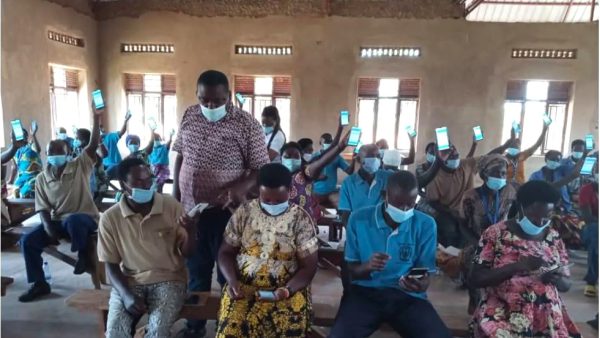
Digital technology is a foundational tool necessary for primary care to conduct its basic functions. In primary care, digital health can include tools such as electronic health records (EHRs), patient portals, mobile applications, telemedicine platforms, electronic registries, remote monitoring, wearable technology, and geographical and population health displays. At its core, digital health should make is easier to people to receive care and clinicians to know how to deliver the right care, while also supporting the patient-clinician relationship.
The Primary Health Care (PHC) Innovations Team at the Bill & Melinda Gates Foundation (BMGF) invests in government-led testing of innovative approaches to PHC service delivery through digital technologies. They focus on key health areas, including maternal and child health, febrile illness, immunization, malaria, TB, HIV, and family planning and sexual and reproductive health. Within this, one particular area of service delivery innovation focus is the digital enablement of front-line workers (FLWs), or Community Health Workers (CHWs). CHW productivity is low due to administrative burden, long lead times for first contact with health systems, disconnected care plans and patient information due to lack of system digitization, and inability to track patient journeys. It is also often hard to assess CHW operations or performance. CHWs are often un- or under-paid, receive little formal training, and often lack formalization within the healthcare system. There is also a critical gender consideration in that this workforce tends to be primarily female. CHW digital tools also often tend to be focused on pure data collection rather than support for decision making, and are implemented in small, siloed pilots lacking interoperability with other health information management systems. While not a silver bullet solution for these problems, we hypothesize that digital enablement of CHWs - with the right governance, funding, and supervision - can improve some of these issues.
Wanting to better understand the current deployment of programs for digital enablement of CHWs, the BMGF PHC Innovations team asked START to conduct a landscape analysis. The START team started by creating a framework that informed the landscape analysis using a mutually exclusive and conceptually exhaustive (MECE) approach. This framework was used to address specific research questions around prominent health programs, digital tool archetypes, impact dimensions and quality of evidence of the landscape. A rapid review, using the Population, Concept, and Context (PCC) framework was then conducted. 607 articles were identified from PubMed/Medline, and 93 articles were included in the final analysis after title, abstract and full text screening. The retrieved data was analyzed and synthesized on LMIC regional levels, including Africa, Asia, and Latin America. Ethiopia and Zambia, countries that have long had high integration of tools with their Ministries of Health, have more positive impact reports and higher quality of evidence. The majority of research on digital tool enablement of CHWs in Asia is conducted in the rural regions of India, and concentrated on health programs targeting maternal and child health, non-communicable disease, and mental health. For Latin America, the majority of research is conducted in rural regions of Brazil and Argentina, and concentrated on health programs targeting non-communicable diseases, including diabetes and hypertension.
Overall, the team found that the majority of research was concentrated in countries with existent strong digital infrastructure, such as Kenya, India, Brazil, and South Africa. Across all geographies, the impact of digital tools was anecdotal, most tools were in pilot stage, and the quality of evidence is low and assessed based on health outcomes within the population. Measurement of the impact of digital tools is limited by general digital infrastructure obstacles existent in the location at hand. Across regions and tool archetypes, 68 reported positive impact, 22 reported no impact and only 1 tool reported negative impact. We recommend investment in decision support, case management, training and data collection tools, as they have shown to have positive impacts across different health programs and all geographies. Countries with emerging or underdeveloped digital infrastructure should receive further investment in digital tool capacity-building and research efforts, examples include Madagascar, Rwanda, Cambodia, Myanmar, Honduras, and El Salvador.






